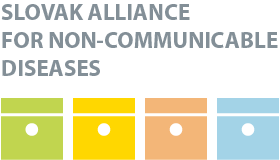—
HPI Network > HPI - Health Policy Institute > Health System in Slovakia > 5. Provision of services > 5.10 Mental health care
5.10 Mental health care
Thursday, 05. May 2011, 1:02 — HPI
| << PREVIOUS
5.9 Palliative care |
Introduction – Organization – Financing – Resources – Provision – Reforms – Assessment – Conclusions – Appendices |
NEXT >>
5.11 Dental care |
Mental health care is provided in outpatient and inpatient settings and is covered by SHI. In 2008, psychiatric services were provided in 386 outpatient departments and in 81 inpatient departments with a total of 4379 beds. The inpatient departments are specialized in psychiatry (78% of psychiatric beds), geriatric psychiatry (7%) and drug addiction (15%). A total of 2134 patients had been admitted for outpatient treatment, 4% of whom were adolescents. Psychiatric diseases constituted 54% of the overall treatment, while alcohol and drug abuse accounted for 32% and 13% respectively (NCHI, 2009c). A full overview of the various institutions providing mental health services in Slovakia can be found in Box 5.1.
The government of Slovakia approved the National Programme of Mental Health in 2004, which has the following goals for the period 2005–2015: destigmatization of people with mental disorders, development of psychiatric home care agencies, development of crisis intervention services and development of mental health programmes. The goals were set through a dialogue between EU Member States and the EC (the Green Paper on Mental Health consultation) and their future development is incorporated in several EU documents. The Ministry of Health adopted strategic documents concerning mental health care and the concept of drug addiction medicine in 2006.
In 2008, inpatient facilities hospitalized a total of 1841 drug addicts, which was 30% less than in 2000. Treatment was sought most by users of heroin (35%) and stimulant drugs, mainly methamphetamine (23%) (NCHI, 2009b). Financial resources used to fight drug use and abuse focused on a reduction of the supply through repressive measures (70% of financial resources) and a reduction of the demand through prevention, treatment, harm reduction and education (30%).
Box 5.1: Mental health services in Slovakia
|
Source: Data from HPI, 2008.
The General Secretariat of the Ministerial Committee for Drug Addiction and Drug Control was established in 1995 with expert committees on (1) prevention, (2) legal issues and law enforcement, (3) communication strategies, and (4) treatment and re-socialization. The National Monitoring Centre for Drugs, a part of the General Secretariat, focuses on the monitoring and evaluation of the drug situation in Slovakia, in connection with the European Monitoring Centre for Drugs and Drug Addiction (EMCDDA) located in Lisbon. The centre is a member of the REITOX network (European Information Network on Drugs and Drug Addictions), which monitors psychotropic substances and provides background information for political decisions at the national and European levels.
News
The amendment of the Decree on emergency medical service
Health insurance companies returned over 400 thousand €
The HCSA received 1,647 complaints last year
A half million people will earn more
Most of public limited companies ended in the black
Debt of hospitals on premiums has grown to nearly € 105 MM
Slovak health care may miss € 250 million next year
Profits of HIC amounted to € 69 mil. last year
Owners of Dôvera paid out money but did not paid taxes
Like us on Facebook!
Our analyses
- 10 Years of Health Care Reform
- New University Hospital in Bratislava
- Understanding informal patient payments in Kosovo’s healthcare system
- Analysis of waiting times 2013
- Health Policy Basic Frameworks 2014-2016
- Analysis of informal payments in the health sector in Slovakia
- Serbia: Brief health system review
developed by enscope, s.r.o.
